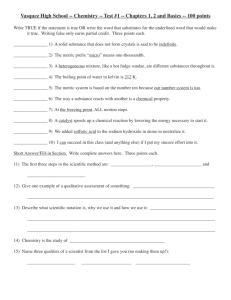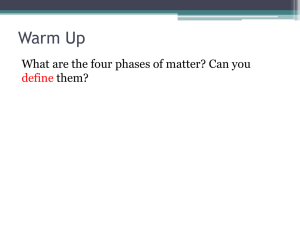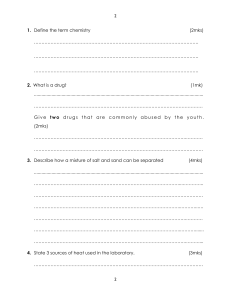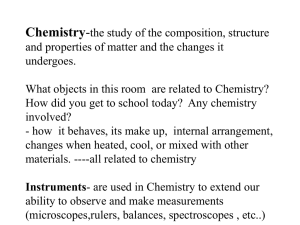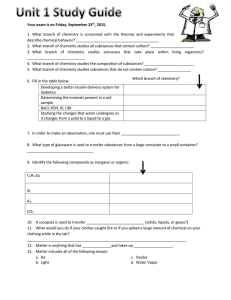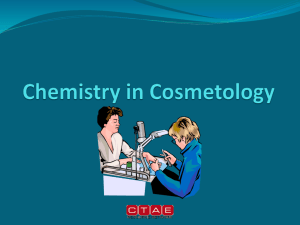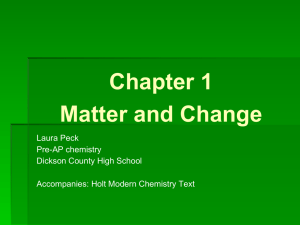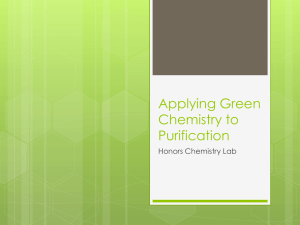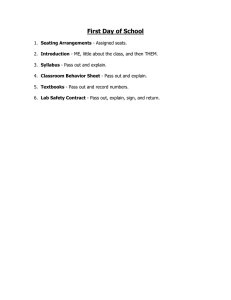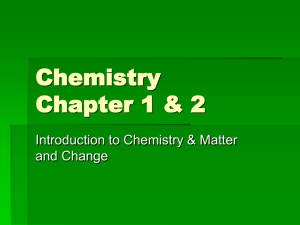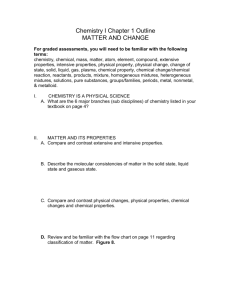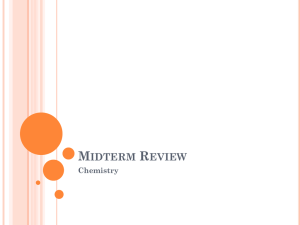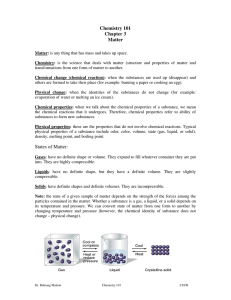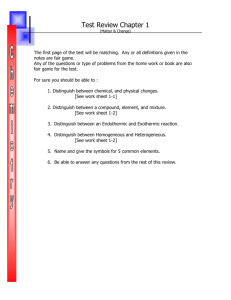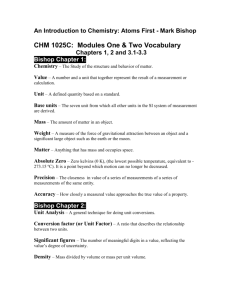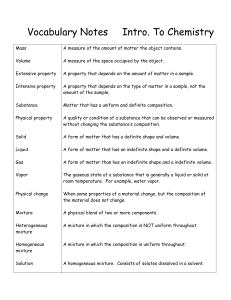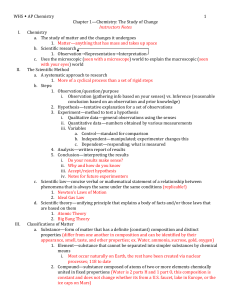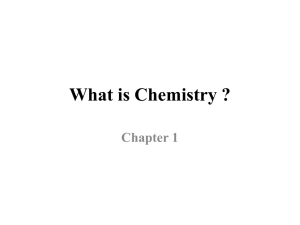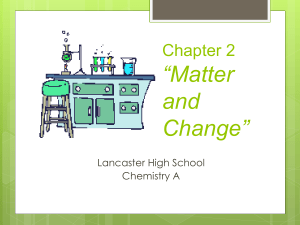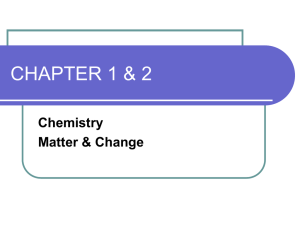Chapter One review: Matter
advertisement
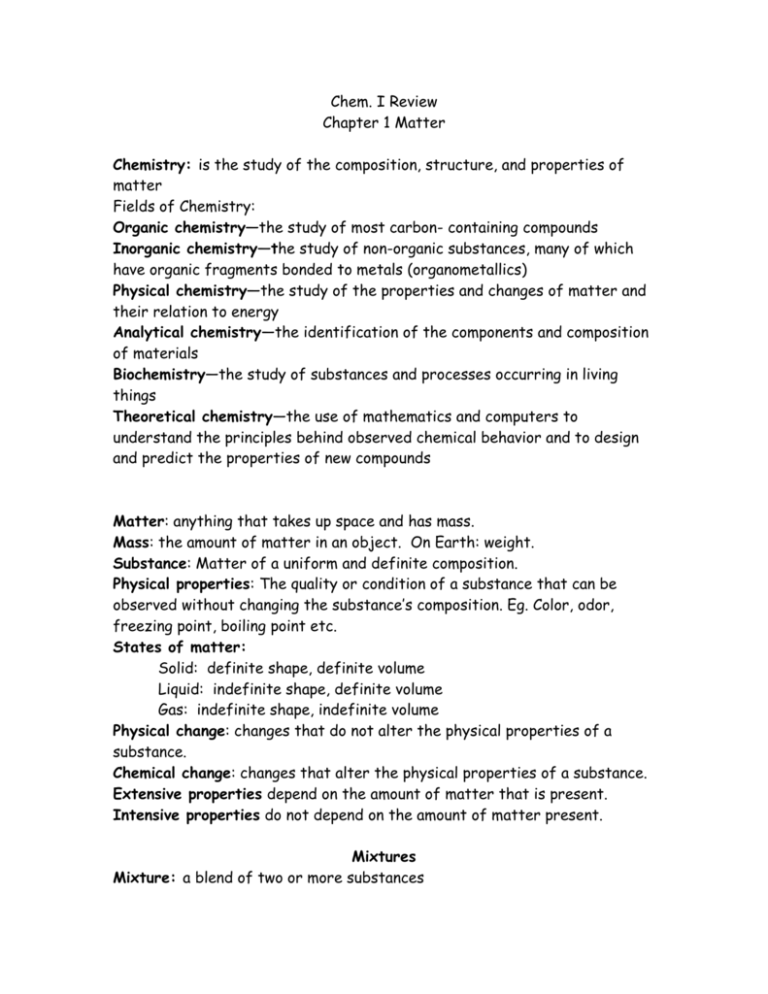
Chem. I Review Chapter 1 Matter Chemistry: is the study of the composition, structure, and properties of matter Fields of Chemistry: Organic chemistry—the study of most carbon- containing compounds Inorganic chemistry—the study of non-organic substances, many of which have organic fragments bonded to metals (organometallics) Physical chemistry—the study of the properties and changes of matter and their relation to energy Analytical chemistry—the identification of the components and composition of materials Biochemistry—the study of substances and processes occurring in living things Theoretical chemistry—the use of mathematics and computers to understand the principles behind observed chemical behavior and to design and predict the properties of new compounds Matter: anything that takes up space and has mass. Mass: the amount of matter in an object. On Earth: weight. Substance: Matter of a uniform and definite composition. Physical properties: The quality or condition of a substance that can be observed without changing the substance’s composition. Eg. Color, odor, freezing point, boiling point etc. States of matter: Solid: definite shape, definite volume Liquid: indefinite shape, definite volume Gas: indefinite shape, indefinite volume Physical change: changes that do not alter the physical properties of a substance. Chemical change: changes that alter the physical properties of a substance. Extensive properties depend on the amount of matter that is present. Intensive properties do not depend on the amount of matter present. Mixtures Mixture: a blend of two or more substances Heterogeneous- non-uniform Homogeneous- uniform Solution- a chemical term for a homogeneous mixture Phase- any part of a system with uniform composition. Separating mixtures: Heterogeneous mixture: Physical- “pick it out” Filtration Homogeneous mixture: Distillation Evaporation Chromatography Elements: The simplest form of a substance, cannot be broken down into a simpler substance. Compound: A mixture of two or more elements. It can be broken down chemically into smaller substances. Chemical Reaction: one or more substances change into new substances. Reactants are the starting substance Products are the end product Chemical property: The ability of a chemical to undergo a chemical reaction to form a new substance. Reading the periodic table: Atomic number 11 Symbol Na Atomic Mass 22.989 Types of Elements: Metals: malleable, ductile, luster, conductor Non Metals: brittle, low boiling point, poor conductors, no luster Metalloids: both metal and nonmetal qualities Noble Gases: non-reactive
